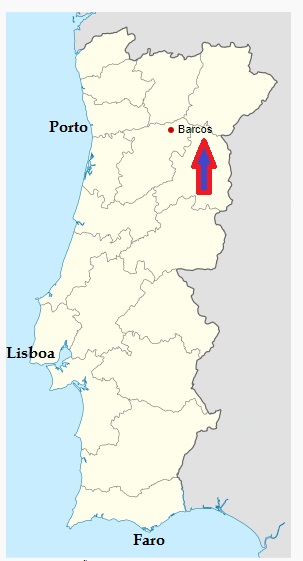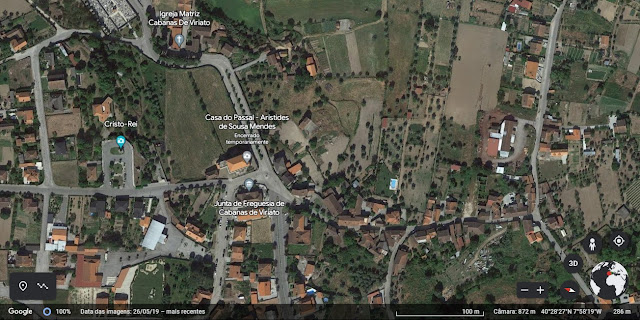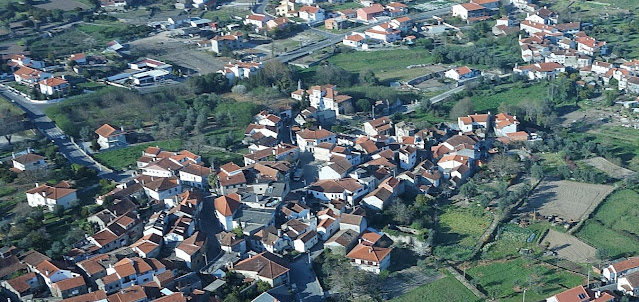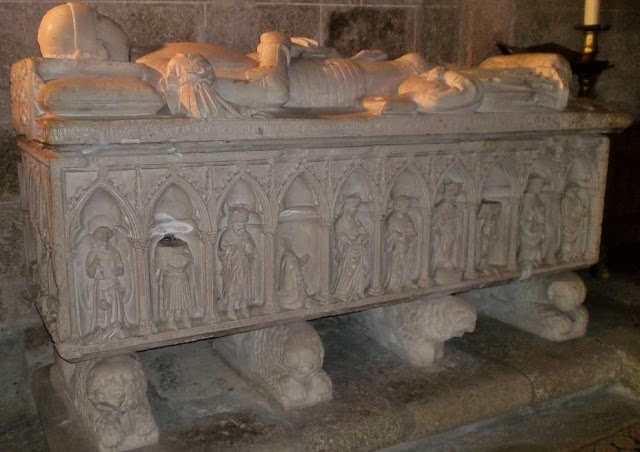Barcos is a former Portuguese parish in the municipality of Tabuaço, district of Viseu, with an area of 9.81 km² and 592 inhabitants (2011). Its population density was 60.3 inhabitants/km². It is a winegrowing village in the Douro.
It was the county seat between 1263 and 1855. It was made up of the parishes of Adorigo, Barcos, Santa Leocádia and Santo Adrião. In 1801, the county had 1,499 inhabitants.
After the administrative reforms at the beginning of Liberalism, the parishes of Folgosa, Vila Seca, Pinheiros and Vale de Figueira were integrated into the municipality. In 1849, it had 3,193 inhabitants.
In 2013, the parish of Santa Leocádia was added, creating the Union of Parishes of Barcos and Santa Leocádia.
History
Boats, one of the most interesting and noble wine villages, stands on a slightly undulating plateau. It is one of the most important villages in the municipality of Tabuaço, and its parish is made up of the homonymous village and the village of Santo Aleixo which is located on one of the slopes of the river Távora, to the northeast.
Its toponym, Barcos, refers us, according to Almeida Fernandes, to the Germanic term «Barc», in its plural, referring to territorial delimitation marks.
It is said that near the village of Barcos there was, in the early days of the Nationality, a medieval castle that was built by the land grantee to defend against the Moorish onslaughts.
Other authors refer that the very ancient parish of Santa Maria do Sabroso, prior to the founding of the nationality, gave way, in the 14th/15th centuries, to the parish of Nossa Senhora da Assunção de Barcos, to which the abbot seat was moved, which was also a collegiate. However, the Gothic temple of Barcos, still of Romanesque inspiration, must have existed since at least the 13th century. Santa Maria do Sabroso appears taxed, at the time of the parish enrollment of the Kingdom of 1321, at 300 pounds. Even after the Collegiate moved to Barcos, the Church of Santa Maria do Sabroso continued to serve as the parish seat of Pinheiros, Carrazedo and Santa Leocádia, until the first half of the 18th century.
Although included in the extensive Couto de Leomil, which reached the Douro, the village of Barcos was soon constituted as a municipality, with a long term, when compared to the other neighboring municipalities.
The municipality of Barcos was the last of the municipalities to be definitively extinguished, by Decree of 24 October 1855, in favor of Tabuaço. From the end of the 17th century until the first half of the 19th century, Tabuaço had been conquering a certain hegemony in the region, since the creation of the post of Captain-mor until the creation of the Tabuaço court, around 1769, with the respective Juiz de Fora. , competing in this way, and mainly, with Barcos and Sendim, and later overlapping with these two villages.
Points of interest
Unfortunately, the Pelourinho de Barcos, standard of its ancient municipal autonomy, was dismantled in the 19th century, leaving, however, the primitive House of the Chamber and Chain, the former Casa da Roda dos Expostos, as well as the majestic building, from the late 1700s or the beginning of the following century, built to serve as the Town Hall and Court, as well as the Mata da Forca, where it was erected, taking advantage of the late-medieval structures of a wine press.
With regard to its archeology, it is necessary not to forget other sites that deserve a careful visit, such as Castro do Sabroso, the Casal Roman de Vila Chã 1, the Neolithic/Chalcolithic settlement of Vila Chã 2 or a section of the Roman road /medieval, which would link Barcos and Sabroso.
Of its vast cultural heritage, it is important to mention the magnificent Igreja Matriz de Barcos, classified as a National Monument since 1922, and which was built in the 13th/14th centuries, in Romanesque style, and was subsequently the subject of new works in the 17th, 18th, 19th centuries. and XX. It preserves architectural and decorative elements from the Romanesque, Gothic, Mannerist and Baroque styles. There are other places of faith, such as the Romanesque Church of Santa Maria do Sabroso, former parish seat, the chapel of Santa Bárbara, the chapel of São Pedro, inside the Castro do Sabroso, the Nicho do Senhor da Boa Viagem or the numerous Passos de Via-Sacra and the Calvary of Boats, built along the main road axes of the old town during the 17th and 18th centuries. Other buildings are linked to the history of the parish, namely the 17th century Casa da Colegiada, the Passal de Barcos, the ancient Pedra do Sardão or the remains of the Chapel of Nossa Senhora da Piedade, perhaps from the 16th century. In the area of equipment architecture, mention should be made of the 18th-century Fountain in Largo do Adro, the Old Fountain, which underwent work in the 19th century, or the old Forno do Povo. The sober and majestic Cruzeiro dos Centenários de Boats rises close to Matriz. As landmarks of residential civil architecture, we have, among other countless properties built over centuries, the Solar dos Cunhas, Casa Magalhães Coutinho and Casa dos Aguiar. In its territory there are numerous farms for agriculture and wine production, namely the Quintas of Padrela, Pereira, Ramiro, Raposeira, Vale da Busa, Vale do Barco and the main and most historic of the parish, the Quinta do Monte Travesso. , with a chapel dedicated to Nossa Senhora das Graças, who over the last two centuries has been linked to important figures in the history of the Douro region.
Traditions
In Barcos it is possible to maintain a tradition of Celtic origin, the marriage of single women, performed on the eve of Carnival. Young people go up Cabeço da Forca and "perform" the marriage of single women in the village. Peer organization is traditionally designed to be as dissimilar as possible. A bull is made, covered with a canvas and “adorned” with real horns. Your task is to frighten passers-by.
Of pagan origin, the Burning of Judas takes place on Hallelujah Saturday, after Easter, where a doll with a wire structure is burned, dressed in clothes and with physical resemblance to the person whose popular criticism it intends to reach.
Tourism
Visitors to this parish can also walk on the two footpaths included in the network of footpaths in Tabuaço: Socalcos do Douro and História e Natureza.






















































